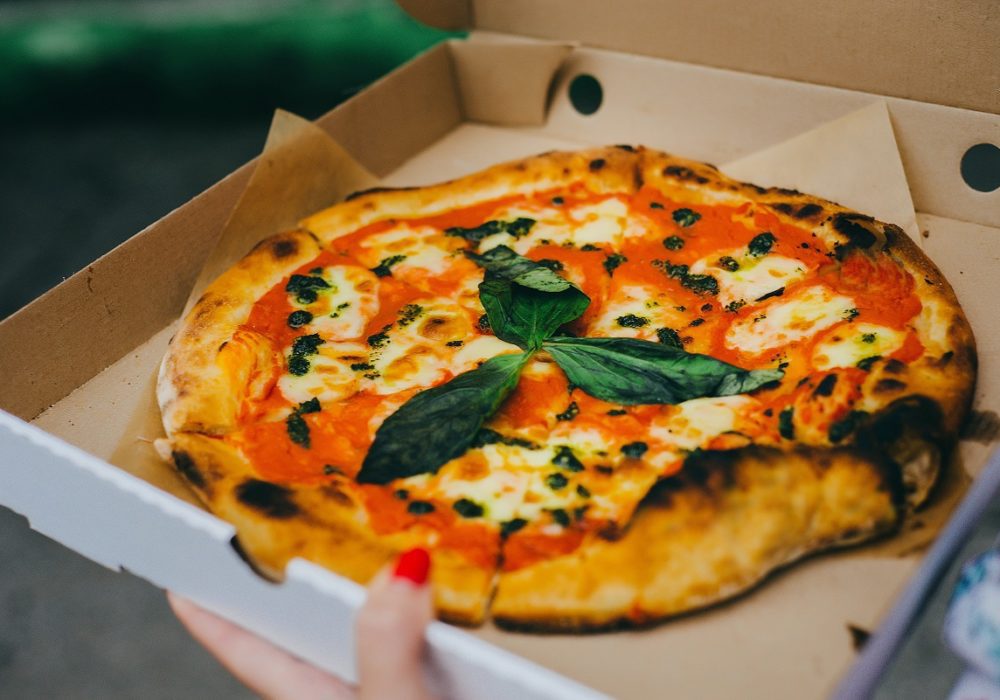
Inconsistent practice by councils contributing to contaminated recyclables
The issue of contamination of recyclables means that nearly one fifth of waste in England and Wales is rejected from the recycling process. But for some items there is a somewhat inconsistent approach from councils and waste management firms that may actually be contributing to the problem.
Around 290,000 sold every day in London. The record sales in one day for the market leading takeaway and delivery chain exceeds 535,000 across the UK – that’s right, just a single brand. For 2022 the total national market is estimated to exceed £3.4bn.
These figures underscore our relationship with pizza. We just love it. However, for every takeaway or delivery unit sold, this comfort food produces the inconvenient by-product of a box to be disposed of…
The contamination of pizza boxes with greasy residues and the impact this has on recycling is a matter of some debate. The issues are interpreted and dealt with in different ways, and this means there is no clear consensus and a great deal of inconsistency in how pizza boxes are handled by local authorities (LAs) and their waste management partners.
After the joy of pizza what happens to the box?
Box material is recyclable and the symbols on boxes support this, providing the consumer with the information needed to direct them to place it in the recycling bin. Industry expert, Dr Simon Ellin, CEO of The Recycling Association, is quoted as saying: “Even contaminated boxes can be accepted into the recycling stream, as long as the contamination is only surface-level staining.”
However, when it comes to local authorities and their waste processing partners, some do not fully embrace this. Some support Dr Ellin’s view that the whole box, including any parts with greasy residue, should be sent for recycling. Despite this, questions do remain over what level of contamination is acceptable, quite simply, it is difficult to define where the line should be drawn.
Other LAs choose not to accept pizza boxes regardless of contamination levels, even rejecting those that are totally free of contaminants. Yet others say that only parts free from contamination, typically the lid, should be recycled.
At least they all agree on one thing – leftover pizza or unliked toppings and suchlike should not be in the box!
The risks and repercussions of… pizza (boxes)
The reasons for the rejection of all pizza boxes by some LAs may be explained as it’s too time consuming to check each box for contamination; and there is also the need to avoid making recycling decisions too complicated for residents.
Certainly, failing to make sure contamination is avoided can pose risks and have repercussions and mean unnecessary costs further down the reprocessing line.
Firstly, contamination may pose a health hazard. Secondly, a policy of some councils playing it safe by avoiding the illegal export of contaminated material to overseas processing facilities as well as domestic materials recycling facilities (MRFs) is also in play. Batches may be rejected, generating extra costs and administrative overheads.
Distribute ‘best practice’ pizza box recycling information with Whitespace
In an ideal world, all pizza boxes would be recycled. However, there remains a gap between the ideal world and actual practice. It is clear that there is work to be done on getting residents to ‘do their bit’ to ensure that our efforts around pizza box recycling are sharpened up.
Recycling needs to be maximised, while avoiding the inefficiencies that come with ‘wishcycling’, the practice of putting items that are unrecyclable into the recycling system. Wishcycling shows residents want to do their bit, but it is highly counterproductive to the established waste management processes of each LA and its waste management partner.
Irrespective of brand, pizza box design should focus on optimising the messaging to spell out the appropriate way to dispose of each box. Ideally, this should focus on removing food and residue, not littering, checking local council advice, and when in any doubt about recycling, placing it in the waste bin.
Councils should also create concise, clear information to direct residents appropriately so that their disposal actions align with how their particular authority handles pizza boxes.
The Whitespace Resident Mobile app is a powerful tool for distributing information about waste management services. As well as general info such as collection days, and public holiday schedule changes, the app also provides residents with the capability to report issues, such as anti-social behaviour (ASB) including graffiti and fly tipping.
The Resident Mobile app is very well suited to disseminating specific information to support ‘best practice’ for the disposal of pizza boxes, as determined by each individual council. To find out more about Whitespace Municipal Waste Management solutions, please get in touch by calling us on +44 (0)1483 231 650 or emailing us at info@whitespacews.com
